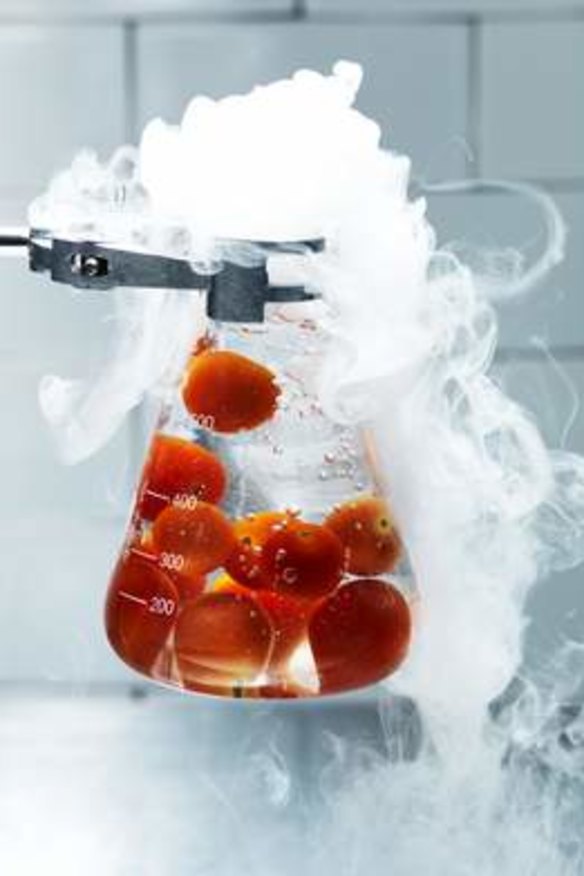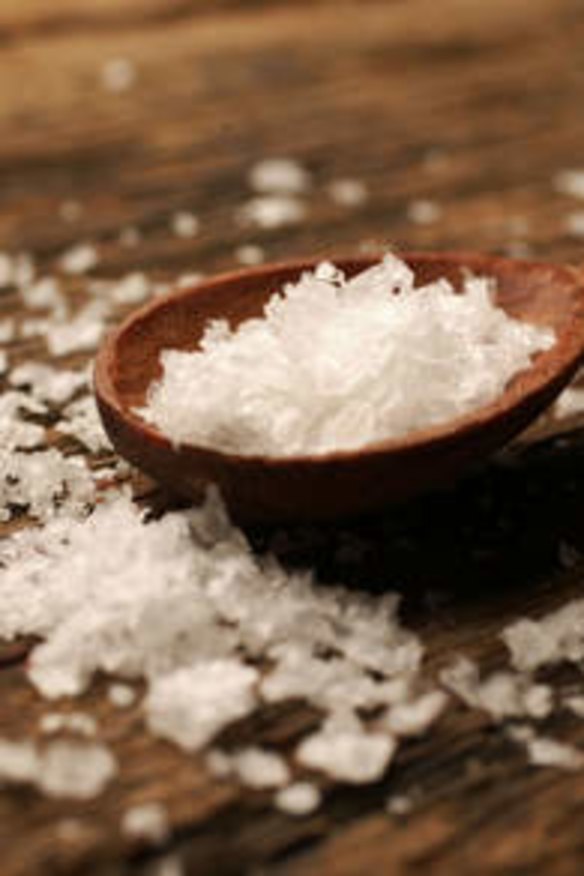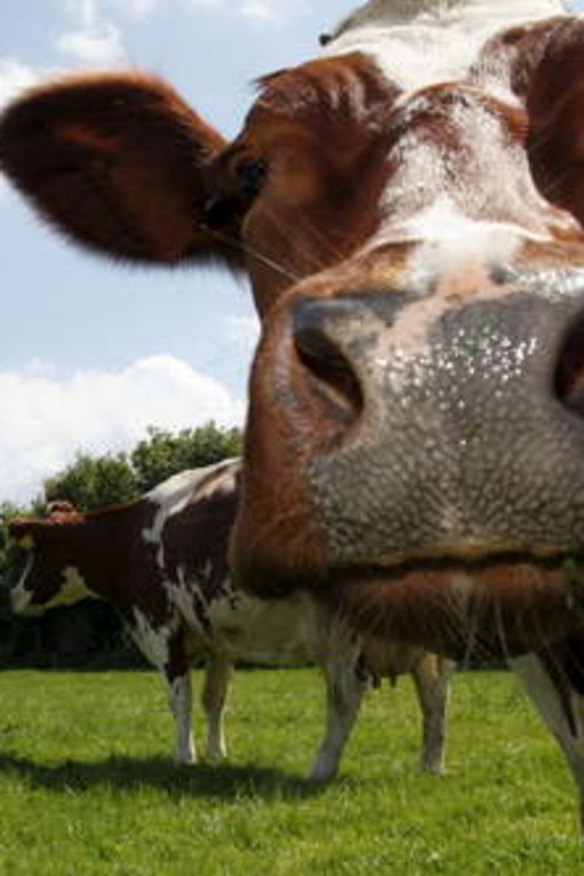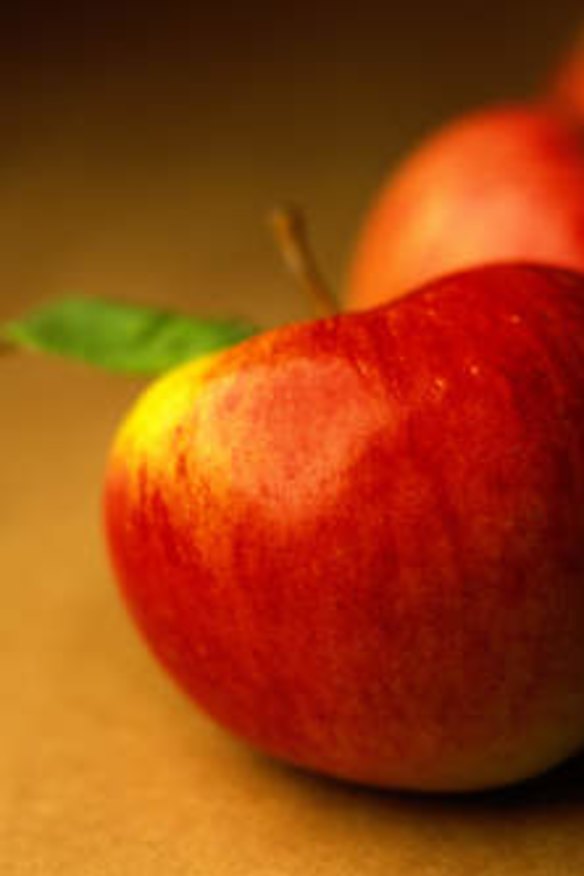What's wrong with our food?
<b>Simon Thomsen</b> examines what we're really putting into our mouths.

There's a eureka moment food manufacturers strive for when creating products, dubbed the ''bliss point''. It's the perfect amount of sugar added to processed food to maximise their appeal - an idea coined in the 1970s because sugar is a human weakness, an irresistible and innate craving.
In his compelling and frightening book, Salt Sugar Fat: How the food giants hooked us, journalist Michael Moss recounts when Australian psychologist Robert McBride addressed a 1991 food industry gathering saying, ''The bliss point is a powerful phenomenon and dictates what we eat and drink more than we realise,'' adding, ''Nutrition is not foremost on people's mind when they choose their food''.
But salt, sugar and fat content are only part of the equation that makes up modern food. In the face of growing concerns about our diet, health and the food we eat, we survey what experts widely acknowledge is wrong with our food now.
Too much sugar, salt and fat
''Convenience'' food manufacturers use this trio to create products with maximum appeal for the cheapest price, as Moss argues persuasively in Salt Sugar Fat. He singles out the potato chip as America's number one contributor to obesity, explaining the how science goes into increasing its appeal: from how the salt is applied, to the mouth feel of the fat and even the sound of the crunch.

Interestingly, our bodies calibrate to the existing environment: the sweeter your diet, the sweeter you want things; children introduced to salt early on develop bigger cravings for it. Meanwhile, new research is pointing to high sugar diets increasing the risk of Alzheimer's disease. The most telling point in Moss's book is that the senior convenience food company executives mentioned rarely ate the products they made (or gave them up for health reasons) and don't let their children eat them.
Too much plastic
It's a cheap, light and easy storage container, but some plastics can ''migrate'' into food. Heating plastics - ever put a takeaway container into the microwave? - increases ''leaching'', as does contact with salty, acidic or fatty foods. Bisphenol A (BPA) causes the most concern. It's used in everything from water bottles to tin can linings. The European Union and Canada banned its use in baby bottles, while Australian baby bottle manufacturers phased it out in 2010 ''in response to consumer preference'' - children's drink bottles are often marketed as BPA free - and Canada declared it a toxic substance. Studies have linked it to prostate and breast cancer, erectile dysfunction and last year, published research from Miguel Hernandez University in Spain linked BPA to obesity and diabetes.

Food Standards Australia New Zealand (FSANZ) maintains that ingesting small quantities of BPA is safe.
But also under scrutiny are plasticisers, especially the group known as phthalates, added to PVC to make it softer and more flexible. Some phthalates are banned in the EU and other countries, but the plasticiser which replaced it, DEHA, has also raised concerns in tests on lab rats.
Teflon also makes Bruce Lourie, co-author of Slow Death by Rubber Duck: How the Toxic Chemistry of Everyday Life Affects Our Health, wary. Heat a non-stick frypan on high for 10 minutes and the toxic gasses it releases would kill a bird in the kitchen, he told ABC radio in 2010.

We waste too much
An estimated 40 per cent of American produce, worth more than $45 billion, is wasted annually. In Australia, it's up to 20 per cent - around 1.5 kilograms of food a household a day, worth $1036 a home, and $8 billion nationally. Around one-third of the food thrown out is fresh, another 27 per cent is leftovers and 9 per cent is frozen food. It's also estimated that between 20 and 40 per cent of fruit and vegetables don't make it to the supermarket shelf, rejected on cosmetic grounds.
Our food's too old
Much of the food you eat is older than you realise. Ethylene is a petroleum-derived flammable gas that mimics the ripening hormone of many fruits, especially tomatoes, which can be months old by the time you buy them. Green tomatoes are picked and gassed so they ripen slowly and evenly . Ultimately, a tomato turns red before it's ripe, so the reason it can lack taste is that it's still unripe (and cold storage has killed off the flavour enzyme).
There are new season apples and then there are ''birthday apples'' - the industry nickname for those sold after up to a year in cold storage, a common practice to smooth over interruptions in seasonal supply.
In 2008, The Sun-Herald analysed Australian-grown Granny Smith apples from Sydney supermarkets and found they were between nine and 10 months old.
As Australian author Dianne Loughnan says in her book Food Shock, ''We are not paying for taste at the supermarket. We are all paying for the transportability, speed and convenience.''
And it's been spun
The next time you see a product marketed as using less salt, sugar or fat, read the fine print. When food manufacturers reduce one dietary bogeyman, they generally ramp up another to compensate in taste terms.
Then there's ''Made in Australia'' which can mean the ingredients are imported but packaged in Australia; or high-fat vegetable products sold as ''no cholesterol'' (animal fats), ''no added sugar'' in products already high in sugar and ''light/lite'', which is often more about taste, texture or colour, rather than lower fat or kilojoules.
Manufacturers routinely trademark company names with the words ''natural'' and ''healthy'' to make their products sound better for you.
Then there are dubious health claims, such as chocolate that's ''a rich source of antioxidants'' - as well as being 19 per cent fat and 50 per cent sugar.
The ACCC tackled Coles for offering ''freshly baked in-store'' and ''baked today, sold today'' bread that was originally made, par-baked and frozen in Ireland before it was reheated in store.
The ACCC also took on ''organic'' water sellers last in July, with deputy chairwoman Delia Rickard saying the term is used to justify higher prices. Water is not ''organic'' under the legal definition.
Who put that in there?
Check the back of the packet. Does it list L-cysteine, an amino acid that prolongs shelf life and is used as a bread conditioner and flavour enhancer? Then you're probably eating either human hair or duck feathers. It's a fast food staple.
And E102, tartrazine, a synthetic dye blamed for allergic and intolerant reactions and hyperactivity in children, is banned in Austria and Norway. It's one of six yellow-red spectrum azo dyes - E102, E104, E110, E122, E124, E129 - dubbed the ''Southampton Six'' after a 2007 study linked them to changes in child behaviour, which led to a voluntary ban in Britain in 2009. The following year, the EU required products containing the six to carry the warning: ''may have an adverse effect on activity and attention in children''.
In 2011, the US Food and Drug Administration's advisory committee voted narrowly against similar warnings, and called for more research.
FSANZ's 2012 review of exposure to the controversial colours concluded that they ''do not pose a public health and safety concern for children in Australia as part of a balanced diet''.
More than 1000 Australian food products, from chocolate biscuits to ice-cream, contain the colours.
While feeding meat meal to ruminant animals was banned in Australia in 1999 in response to BSE (Mad Cow Disease), it continues to be used in pig and poultry feed. We're talking about the recycled waste - offal, bones and trimmings - from abattoirs and poultry farms. Around 7 per cent of chicken feed is meat and bone meal.
Palm oil, often labelled ''vegetable oil'' on ingredient lists, is so high in saturated fats it makes lard seem healthy. Its growing popularity has dramatically increased saturated fat levels in manufactured foods.
The prize for our favourite overseas food additive goes to castoreum, a US FDA-approved ''natural flavouring'' used in perfume and as a flavour enhancer in ice cream and fruit-flavoured products. It's taken from a scent gland located under a beaver's tail, which led crusader Jamie Oliver to call it ''beaver anal gland''.
We eat too much meat
Australians consume an average of 116 kilograms of meat a year, second only to Americans. Since the 1970s, there's been a dramatic shift away from beef and lamb to pork and, most notably, chicken - its consumption has quadrupled in 40 years, to make it our top choice at 43 kilograms.
Meeting this demand has consequences for production. ''Conventionally'' farmed broiler chickens, harvested in five-to-eight weeks, half the time it takes to raise organic birds, are routinely fed prophylactic antibiotics. Yes, they're hormone free, as advertised, but hormones in chickens have been banned for decades.
And ''chemical free'' doesn't refer to the farm, but to processing, where chlorine is otherwise routinely used to wash the carcasses.
Then there's stocking densities. In July, in response to action by the ACCC, the Federal Court of Australia found that Baiada, owners of the Steggles brand, and the Australian Chicken Meat Federation misled consumers by using ''free to roam'', because the chickens were stocked at up to 19 birds a square metre, up to 33 days of their 42-day lifecycle. Turi Foods, suppliers of La Ionica chickens, were fined $100,000 over the issue in 2012.
Australia doesn't even have national standards for something as basic as the definition of ''free range'' eggs, which now make up 40 per cent of sales and rising.
In June, the Queensland Government changed the definition from a stocking density of 1500 hens a hectare to 10,000. Coles now uses the same definition, while the Australian Egg Corporation was pushing for 20,000 a hectare.
Former High Court judge Michael Kirby summed up the issues around our love of meat in an opinion piece for the ABC in June: ''In truth, meat is not cheap. The sticker price is far from the real price. There are enormous costs to be paid, by the environment, by our health, and by the 500 million animals suffering on Australian factory farms.''
We want four seasons in one day
To get the same fruit and veg all year, we turn to cold storage, or imports. Winter cherries from California, asparagus from South America. More food is coming from overseas, to the point where the balance of trade on food is roughly even. In Food Shock, Loughnan recounts how 50,000 tonnes of navel oranges rotted in Australian paddocks as juice manufacturers used Brazilian concentrate instead. Yes it's cheaper for consumers - and a high dollar hasn't helped - but the result is that Australian farmers uproot trees, leave farming, and manufacturers close, including several canneries. The last Australian-owned cannery in Cowra closed in April.
Australian Food and Grocery Council says 7000 jobs were lost and 335 food businesses closed or moved overseas in 2011-12.
For many farmers, it's get bigger or get out. The result of this pressure is the disappearance of family farms, as food production shifts to corporate operators owning every stage of the process.
Have you made a significant change in your diet or shopping preferences recently? Jump on the comments and tell us why.
Comment of the week
The comment on this story judged to be the best by the goodfood.com.au editor will be published in The Feed in the Epicure and Good Food print sections next Tuesday and win $100 in prepaid cards courtesy of eftpos. Comments will close on this story at 5pm AEDT Tuesday October 22.
Restaurant reviews, news and the hottest openings served to your inbox.
Sign up